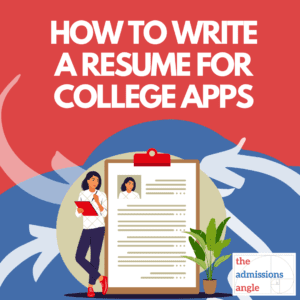
Early Action or Early Decision -
How do I choose?
Early admissions programs are a great opportunity for students to get ahead of the pack in their preparation and college planning. But which early program is right for you?

By ALEX LOVELESS
One the first major decisions that a student will make in their college applications process is deciding on their early application strategy. Applying to schools for Early Action (EA) or Early Decision (ED) can demonstrate to a school that you prioritize them as a top choice, which usually translates into a slightly higher acceptance rate when compared to Regular Decision (RD) admissions. I suggest that almost all of my students apply somewhere early, primarily because decisions for acceptance usually come out in December, which can mitigate the dread and the drain of waiting until the Spring for most other admissions decisions.
Early Action (EA) vs. Early Decision (ED)
First off, let’s make sure everyone is on the same page. So what’s the difference between Early Action and Early Decision? The simple answer is that one is a binding decision (ED) while the other is non-binding (EA). For example, if a student applies to Johns Hopkins ED, if accepted in December, they will be required to attend Johns Hopkins the following year and forfeit any other acceptances from other schools and withdraw any other applications. EA is non-binding in that if a student is accepted through an EA program, they can wait until they receive the rest of their Regular Decision (RD) admissions results before deciding where they wish to matriculate. Some people ask why a student should even bother applying EA if they’re going to have to wait until the Spring to make a decision anyways. This simple answer is peace of mind.

The Case for Applying Early
The students that I’ve worked with that have gained an acceptance by December always have less stress as they’re waiting for the rest of the admissions decisions. Having that one acceptance fends off pesky, irrational doubts that can creep in while waiting months for admissions decisions. Will any college like me? Will I get accepted anywhere? You’d be surprised at the number of excellent students that I have that start thinking this way, even for their safety schools. For this reason, I usually recommend that my students apply, at the very least, to one Early Action target/safety school. Even if the student is waiting for higher SAT/ACT scores, they usually have a good enough score for schools lower on their college list. And because EA is non-binding, they will not be forced to attend the school if they get accepted. The most probable outcome is an acceptance in mid December to a school on their list – a backup plan or safety net or whatever you want to call it. This acceptance does wonders for the mental state for both the student and the parents.
“Having that one acceptance fends off pesky, irrational doubts that can creep in while waiting months for admissions decisions”
But what if I’m a student that wants to apply Early Decision? Isn’t there a high chance that I get deferred or rejected from my dream school?
Because it is a binding contract, you are only able to apply to ONE Early Decision school. But luckily for you, most ED programs allow you to apply to multiple other schools for Early Action. I would say that a majority of my students who apply ED are also applying to at least one or two EA schools, with at least one of them being a target/safety school. By applying to multiple schools early, chances are high that the student will get accepted to at least one of them AND they can take advantage of the higher acceptance rate afford by the ED program of their dream school.
Restrictive Early Action (REA)
Because we’re talking about US College Admissions, there are always some caveats and nuances. Make sure to check each school’s individual policy on early admissions programs. In the past, there used to be some ED schools that restrict where you’re allowed to concurrently apply to for EA. They would stipulate that you can only apply EA to state schools, or something similar. But this trend seems to have mostly disappeared and instead, schools are starting the adopt “Restrictive Early Action” policies. Schools like Harvard, Stanford, Princeton, and Yale have gotten rid of their traditional Early Decision Programs and instead, made their early programs non-binding. For all practical purposes, you can only apply to one ED school or one REA. For an ED application, you can usually also apply to other non-binding non-restricting EA programs. For REA, you cannot apply anywhere else.
The main argument for adopting REA policies is to allow students with financial needs to better shop around and choose a college that gives them the best financial package. Schools like Harvard, Stanford, Princeton, and Yale also aren’t really affected too much by losing a lot of talent in their incoming class. Most students accepted to these institutions will be accepting the invitation, so these top schools can afford to have their early programs be non-binding.
Rolling Admissions
Schools with Rolling Admissions have no strict deadlines for applications and will assess applications as they are received. As a result, students can apply to a rolling admissions college and receive an acceptance or rejection within weeks of applying. Rolling Admissions schools are generally less competitive for admissions and as a result, can be some great target/safety school options for some students. Like getting into a target/safety school EA school, getting a quick acceptance to a Rolling Admissions school can help with your overall psyche and confidence.
College Admissions Services
Schedule a Free Consultation
Meet with a mentor one-on-one via video chat to talk about your son/daughter’s admissions plan. Afterwards, receive a no-obligation Customized College Roadmap (CCR) with advice on courses, extracurricular activities, standardized tests, and Admissions Angle strategy.
Early Decision or Early Action? Which one is for me?
ED represents a double-edged sword in that students who apply for ED have a slightly higher chance of acceptance when compared to RD, but this advantage comes at the cost of a student’s flexibility in choosing the school they wish to attend. As such, I never suggest that a student apply somewhere ED unless it’s their dream school – the school that they would have no regrets if accepted into.
From the university’s standpoint, they want to guarantee a certain level of quality of their incoming freshman class. By accepting a good portion of their students through ED, they can rely on those students showing up the following year and make sure that they have those students at a minimum. For students accepted through Regular Decision, they are not required to attend and therefore, may accept an offer from another institution. For this reason, ED does give students an apparent boost in acceptance rates. If you look here, you can see that a school like Harvard University had in 2018 an EA acceptance rate of 14.5% vs a RD acceptance rate of 2.9%. That discrepancy is huge! According to the numbers, an ED applicant has an almost five times greater rate of acceptance than an RD applicant! However, like most things, there’s more nuance to the numbers than is at first apparent.
“I never suggest that a student apply somewhere ED unless it’s their dream school”
Generally, ED/EA numbers are inflated by a few factors. First off, early programs are where a majority, if not all, athletic scholarships are offered. Students that are recruited for sports teams will apply early and have a huge leg-up on the rest of the applicant pool. Second, early programs are generally where we see the most legacy students accepted. Universities like Harvard still consider legacy as part of their admissions criteria and almost all legacy students will apply early. Last but not least, the early applicant pools are generally just more competitive than RD. If you think about the type of student it takes to put together their application months earlier than the regular deadlines, you can deduce that these students are generally not the procrastinators. They’re most likely better organized, better motivated, or have more help than most of their peers. Add all of these factors up, and you can see why the universities are accepting a higher percentage of students for their early admissions programs.

Additional Information about Early Applications
Again, I want to emphasize that each university has different, nuanced policies regarding their early admissions programs and I encourage you to research these differences. Some schools offer something called Early Decision II, which is similar to ED but is just delayed in its timeline of deadlines and notifications. It can represent a second chance at ED if your first EA/ED/REA option fell through.
Also, for all early programs, getting deferred for regular decision is a really common outcome. Many schools will defer a majority of their applications to Regular Decision and compare students again with the regular applicant pool. A deferral does NOT mean a rejection, as I’ve seen plenty of students get accepted to some pretty good schools after deferral. But like I tell all my students
The Bottom Line
I think that the majority of my students fall into one of three categories:
1) Already have their target test scores + have strong top choice school
For these students, I’m all for them applying ED or REA to their dream school. For ED, they should probably also add in some target/safety EA schools just so that they get a win come December. Students applying for financial aid can usually reach high for their ED/REA school as these schools are usually quite generous with their financial aid packages.
2) Already have their target test scores + no strong preference for school
This one is easy. Avoid any binding programs to give the student more time to research schools and decide later where they might want to attend. I would generally avoid REA as well since there’s a high likelihood that the student doesn’t get accepted anywhere for early, unless they apply for rolling admissions somewhere.
3) Still waiting on target test scores
This one is also pretty easy. If you’re planning on taking the SAT/ACT in November or December, you probably want to put your best foot forward for your reach schools and give yourself a chance to improve your numbers. Better to focus on target/safety EA schools and then submit reach school applications for RD.











